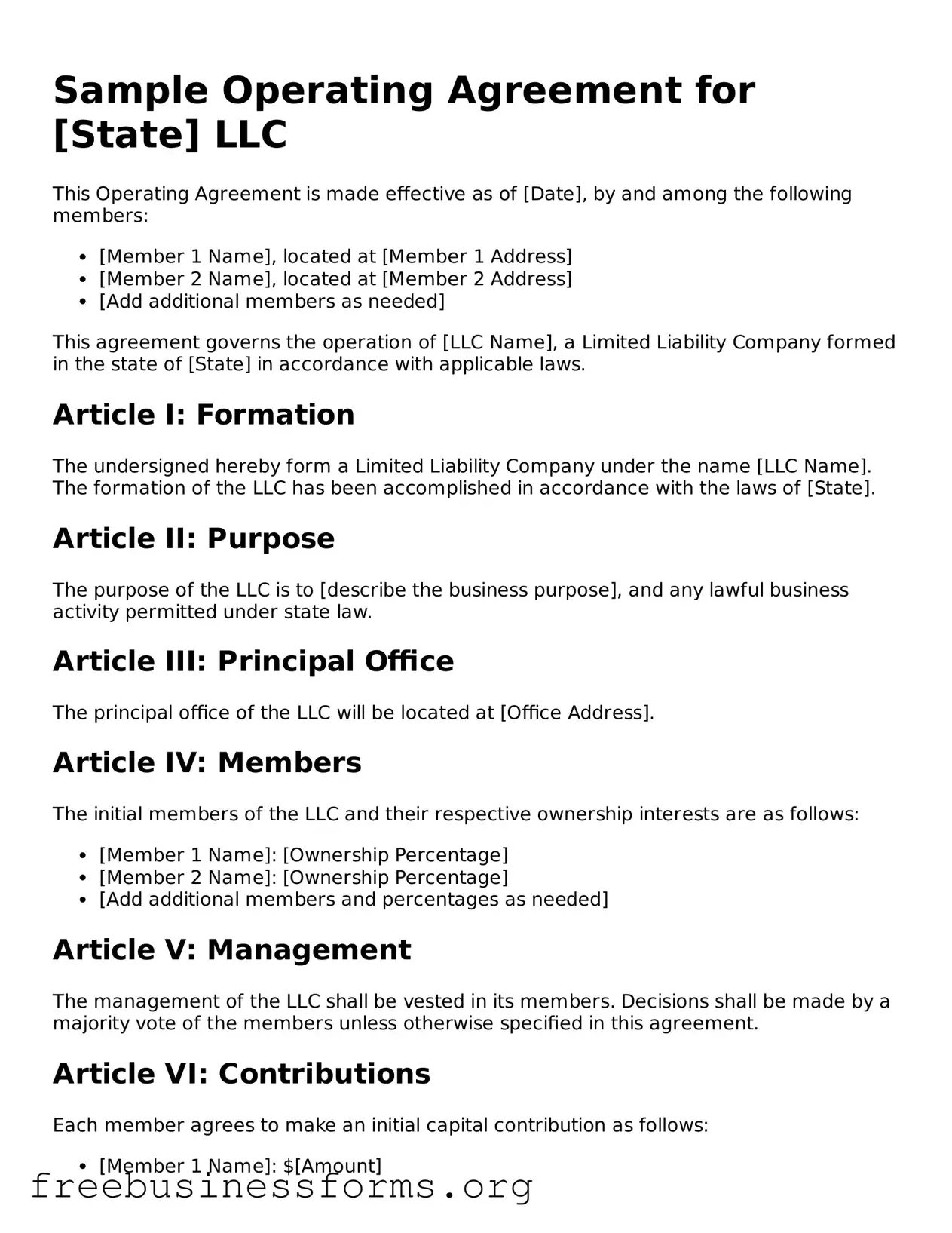Sample Operating Agreement for [State] LLC
This Operating Agreement is made effective as of [Date], by and among the following members:
- [Member 1 Name], located at [Member 1 Address]
- [Member 2 Name], located at [Member 2 Address]
- [Add additional members as needed]
This agreement governs the operation of [LLC Name], a Limited Liability Company formed in the state of [State] in accordance with applicable laws.
Article I: Formation
The undersigned hereby form a Limited Liability Company under the name [LLC Name]. The formation of the LLC has been accomplished in accordance with the laws of [State].
Article II: Purpose
The purpose of the LLC is to [describe the business purpose], and any lawful business activity permitted under state law.
Article III: Principal Office
The principal office of the LLC will be located at [Office Address].
Article IV: Members
The initial members of the LLC and their respective ownership interests are as follows:
- [Member 1 Name]: [Ownership Percentage]
- [Member 2 Name]: [Ownership Percentage]
- [Add additional members and percentages as needed]
Article V: Management
The management of the LLC shall be vested in its members. Decisions shall be made by a majority vote of the members unless otherwise specified in this agreement.
Article VI: Contributions
Each member agrees to make an initial capital contribution as follows:
- [Member 1 Name]: $[Amount]
- [Member 2 Name]: $[Amount]
- [Add additional members and amounts as needed]
Article VII: Distributions
Profits and losses will be allocated to the members in proportion to their respective ownership percentages. Distributions will occur at such times and in such amounts as determined by the members.
Article VIII: Indemnification
The LLC shall indemnify any member for any expenses incurred in the course of business, provided the actions were taken in good faith on behalf of the LLC.
Article IX: Amendments
This Agreement may be amended only with the written consent of all members.
Article X: Governing Law
This agreement shall be governed by, and construed in accordance with, the laws of the state of [State].
IN WITNESS WHEREOF, the undersigned members have executed this Operating Agreement as of the date first above written.
_____________________________
[Member 1 Name]
_____________________________
[Member 2 Name]
[Add additional member signatures as needed]
